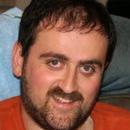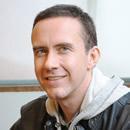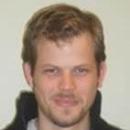SpringOne 2GX 2011
Chicago, October 25-28, 2011
2GX - Groovy / Grails - Session Descriptions
Andres Almiray - Griffon Project Lead
Flying with Griffon 2010 Style
Building a desktop application is a hard task, there are some many things to keep track of that many projects simply fail to meet their goals.
Setting up the project structure keeping each artifact on a well identified location given its responsibility and type, defining the base schema for managing the application's life cycle, making sure the build is properly setup, and more. These are recurring tasks that should be handled by a tool or better yet, a framework.
Griffon Plugin Development
The Griffon framework can be extended via plugins. Plugins can work their magic both at build time and runtime. Building a plugin is actually an easy task however there are a few things you should know to get the most out of the Griffon plugin system.
Jean Barmash - Co-Founder & Lead Developer of EnergyScoreCards
Extreme Scaffolding & User Interface Techniques in Grails
This talk will examine various techniques and solutions for extending the Grails UI in interesting ways. The underlying platform for Grails offers a powerful combination of great ideas, such as scaffolding, sitemesh templates, taglibs, templates, and other that get us nice and close to DRY goal. We will examine several plugins and techniques that take these ideas even further, resulting in yet another boost to productivity.
When GSP is not enough - using ZK RIA Framework with Grails
The ZK Framework is a RIA AJAX framework that encourages server side development to create Rich Internet Application. It abstracts AJAX calls for you and allows you to code all of your UI logic in Groovy or Java, without having to spend a lot of time worrying about generated HTML / CSS / JavaScript, and getting all those technologies to work together along with Grails backend. The ZKGrails integrates ZK with Grails, including automatic component binding with GORM.
Burt Beckwith - Core Member of the Grails Development Team
Advanced GORM - Performance, Customization and Monitoring
You've used GORM in Grails apps, you've written custom criteria and HQL queries, and now you're ready to take database access in Grails to the next level.
Database Migrations in Grails
Hibernate's create-drop mode is great when you're prototyping your Grails applications but once you get past the initial stages of your project you'll need to manage database changes (adding, removing, and renaming tables, columns, and indexes, refactoring data, etc.)
Grails Spring Security Plugins
In this talk we'll look at the new Spring Security Core plugin and its dependent plugins. The core plugin provides all of the standard functionality you expect from a security plugin (URL security, users, roles, form-based authentication, etc.) and extension plugins add extra functionality such as OpenID support, LDAP authentication, object and method security with ACLs, and more.
Peter Bell - Agile Architect/CTO
DSL Evolution for Groovy Developers
Oh no, you're new Groovy DSL is actually popular. And of course, the feature requests keep come in. But what do you do to evolve your DSLs without breaking the existing models as your understanding of the domain changes radically over time?
TDD for DSLs in Groovy
In this session we'll build up a DSL in Groovy test first, showing a number of test strategies which can be used to develop various types of DSLs.
Tim Berglund - Developer, Consultant, Author
Grails Without SQL
Out of the box, Grails famously relies on Hibernate for database persistence through the agency of GORM, the Grails Object-Relational Mapping API. But are Grails apps permanently beholden to relational datastores, even when the relational model is not an appropriate solution for the problem at hand? No!
Seven Steps to Learning Grails
Grails is emerging as a standard JVM web framework in environments ranging from startups to the enterprise. It's a full-stack solution build on rock-solid components, fully relying on convention over configuration, and using the best application language the JVM has yet seen: Groovy. This is the place to be for web apps on the JVM.
In this introductory talk, we'll get a whirlwind introduction to Grails, visiting seven things you need to know about the framework to get started.
Jeff Brown - Core Member of the Grails Development Team
Compile Time and Runtime Metaprogramming With Groovy
The dynamic nature of Groovy makes it a fantastic language for building dynamic applications for the Java Platform. The metaprogramming capabilities offered by the language provide everything that an application development team needs to build systems that are far more capable than their all Java counterparts. Taking advantage of Groovy's metaprogramming capabilities brings great new possibilities that would be very difficult or just plain impossible to write with Java alone. Building Domain Specific Languages in Groovy is easy to do once a team has a good understanding of the Metaobject-Protocol (MOP) and the method dispatch mechanisms used by the Groovy runtime environment.
Extending Grails - The Plugin System
Grails is a super powerful framework for building applications for the Java platform. Grails addresses the pain points that the other web applications frameworks leave you with. This session covers the details you need to further extend Grails to help Grails help you in your environment.
GORM Inside And Out
GORM is a super powerful ORM tool that makes ORM simple by leveraging the flexibility and expressiveness of a dynamic language like Groovy. With GORM developers get access to all of the power and flexibility of an ORM tool like Hibernate without any of the complexity.
Prerequisite: Advanced Grails
Polyglot Web Programming With Grails
Grails is one of the most flexible and most powerful frameworks on The Java Platform. Grails leverages the flexibility offered by the platform in a way that other web frameworks do not. Grails is a fantastic platform for polglot web programming.
Prerequisite: Advanced Grails
Joshua Davis - Grails Portal Project Team Member
Creating a Dynamic Portal using Grails
This session will describe hands-on procedure to use the Grails Portal project as a launching pad for quickly creating web applications. The first part of the session will be spent discussing the advantages that Grails gives to developing User Portals. The second part will have a detailed discussion and examples of integrating Apache Shiro security with Grails Web Flow and the reasoning behind selecting these plug-ins. The session will conclude with a discussion on how these features can be extended to create a fully dynamic portal with personalization and other popular plug-ins.
Integrating Grails with Daisy CMS
This session will describe the use of Daisy, an Open Source Content Management System (CMS) and the different options for integrating it with Grails.
Scott Davis - Author of "Groovy Recipes"
Grails + CouchDB
"CouchDB is built of the Web. I’ve never seen software that so completely embraces the philosophies behind HTTP." Jacob Kaplan-Moss, Django Developer
If you want to get a room full of programmers all riled up, just casually drop the word, "NoSQL." To some, NoSQL means, "death to all antiquated, 1970s-era persistence solutions!" Others take a more pragmatic approach -- "Not Only SQL" means that while relational databases are suitable for some applications, there is an emerging crop of equally viable (and interesting) persistence strategies out there.
Apache CouchDB is a schema-free document store that uses HTTP GETs, PUTs, and DELETEs instead of SQL SELECTs, INSERTs, and DELETEs. It speaks JSON fluently instead of tables, columns, and rows. It uses JavaScript Map/Reduce functions instead of SQL for the query language. It offers effortless replication among distributed CouchDB instances.
Tomorrow's Tech Today: HTML 5 + Grails
As software engineers, we take comfort in the idea of concrete specifications. As web developers, our hearts are either broken (frequently!), or we recognize the W3C's role is a delicate balance of leading the browser developers in new and exciting directions while, in their own words, "paving over the cow paths" of existing, de facto standards.
HTML 5 offers dramatic new improvements for page organization, offering out-of-the-box support for elements like header, footer, nav, section, and article. HTML 5 adds native support for form features such as placeholder text, autocomplete, autofocus, and validation. Additionally, there are a host of new form elements available (email, url, number, range, date, and search) that gracefully degrade in "classic" web browsers -- IE, I'm looking at you!
Hans Dockter - Founder of Gradle and CEO of Gradleware
Beauty and the Beast: Software-Design for Builds and Build Systems
For our production code we apply a wealth of design values and principles. Currently this is rarely done for our builds. Yet the project automation domain, specially in the enterprise, is often at least as complex as the business domain.
The design of your build is heavily influenced and possibly constrained by the design of the build system you are using. The main focus of this talk is to evaluate those design forces of the build systems. Mostly with the help of two books: Refactoring by Martin Fowler and Domain Driven Design by Eric Evans.
Gradle - A Better Way To Build
Gradle allows you to describe your build using a rich, easily extendable build language based on Groovy. It provides compelling solutions for many of the big pain points that exist with current build systems. This session will be mostly driven by live demos. You will see how easy and elegant Gradle enables you to solve a broad range of requirements - over the full life cycle of typical and atypical Java builds.
Gradle in the Enterprise
The project automation requirements of complex enterprise builds are the true stress test for any build system. Gradle has a special focus on enterprise builds. In this session we will talk about and demo on: Multi-project builds, incremental builds, parallel testing, dependency management and concluding with organizing build logic, custom plugins and custom tasks.
Prerequisite: Introduction to Gradle
Hamlet D`Arcy - Sr. Java/Groovy Developer, Groovy Committer
Code Generation on the JVM: Writing Code that Writes Code
"The Pragmatic Programmer" admonished us all to "write code that writes code": use code generators to increase productivity and avoid duplication. Today's language communities have clearly caught on, as more and more frameworks generate code at compile time: AST Transforms, Project Lombok, Spring Roo, and more.
Slimmed Down Software: A Lean, Groovy Approach
The Groovy Programming Language advertises itself as an "agile and dynamic Language for the JVM", but what does this mean exactly? This session explains Lean Software Development, and shows how your choice of programming language can help your entire process remain nimble and adaptive.
Colin Harrington - Senior Consultant, Object Partners, Inc
Getting to know Git: How to give back to Grails
In this session we will spend some time getting to know some of the basics of Git and exploring successful tools and workflows. We will also learn how we can utilize git and git-svn to work with grails and many of ~500 plugins listed on grails.org. Finally we'll explore how to submit pull requests, format patches and contribute code back to original authors and the entire community.
Grails Layouts & Sitemesh
Grails brings a powerful set of tools to the view layer: GSP, Views, Templates, Tag Libraries, and Layouts. Grails' Layouts seem to be the most misunderstood and underutilized component of the view layer. In this talk, we'll do a deep dive on how Grails uses Sitemesh, explore integration/customization points as well as live-coding examples of how to use some of the lesser known tags to achieve a very flexible and intuitive approach to developing DRY applications with Grails.
Paul King - co-author of "Groovy in Action"
Acceptance Testing with Groovy
An ideal way to make use of Groovy's great support for writing domain specific languages (DSLs) is when writing customer or acceptance tests. When using such an approach you typically use a high level English-like testing DSL to express the test. The approach is so popular that in fact numerous frameworks now exist for creating such tests.
Concurrency with GPars
This talk looks at writing concurrent Groovy programs using GPars. GPars is a comprehensive library for parallel execution that provides a menu of options to the developer.
Groovy and Concurrency
This talk looks at using Groovy for multi-threaded, concurrent and grid computing. It covers everything from using processes, multiple threads, the concurrency libraries ear-marked for Java 7, functional programming, actors including a brief glimpse of GPars, as well as map/reduce, grid and cloud computing frameworks.
Groovy.DSLs(from: beginner, to: expert) 2011 Edition
This talk examines how dynamic languages in general and Groovy in particular take us toward the goal of writing programs for a particular domain using phrases that look familiar to subject matter experts from that domain. Groovy, is a popular and successful dynamic language for the JVM. It offers many features that allow you to create embedded Domain Specific Languages(DSLs) including Closures, compile-time and run-time metaprogramming, command chain expressions, operator overloading, named arguments and other concise syntax conventions.
Dave Klein - Author of 'Grails: A Quick-Start Guide'
Grails Integration Strategies
It's amazing how quickly one can build web applications with Grails in a greenfield environment, but most of us do not have that luxury. We have existing infrastructure and applications that we have to maintain and extend. We have legacy databases (or legacy database administrators) to deal with. Does this mean we cannot benefit from the magic of Grails? No way! The ease of use and productivity of Grails is matched by its power and flexibility. In this session we will discuss some of the ways that Grails can be integrated with the enterprise; EJB/JSF applications, Spring/Hibernate, legacy databases, and even non-Java applications.
Grails: Bringing Radical Productivity to the JVM Part I
The goal of this hands-on tutorial is to get started and get productive with Grails. We’ll do this by jumping right in and building an application, from design to deployment.
Grails: Bringing Radical Productivity to the JVM Part II
In Part II of this session, we will continue the build out process with the Grails application.
Kenneth Kousen - Author of "Making Java Groovy"
Groovy Web Services, Part I: REST
Groovy has excellent networking capabilities and is great at processing XML, which makes it a natural for working with RESTful web services.
Groovy Web Services, Part II: SOAP and JAX-WS
Although RESTful web services have gotten better press, SOAP-based web services are often the backbone of many large enterprises. The user-friendly advances in JAX-WS 2.* make developing such services much easier. As with most Java topics, Groovy simplifies the development of web services as well. Since it is particularly well-suited to XML processing, Groovy is quite helpful in the web services and SOA worlds.
Guillaume LaForge - Head of Groovy Development for SpringSource
Gaelyk, a lightweight Groovy toolkit for Google App Engine
Guillaume will present Gaelyk, a lightweight Groovy toolkit for easily developing Groovy applications to be deployed on Google App Engine Java. We'll learn more about what the toolkit provides, how to leverage it for your own needs through some demos.
Groovy update: to infinity and beyond!
In "Groovy update, to infinity and beyond!", Guillaume Laforge will come back on Groovy's past, present and future. First, we'll do a quick review of Groovy 1.6 features: multiple assignment and option return in if/else and try/catch blocks, AST transformations with @Delegate, @Lazy, @Immutable, @Mixin and friends, the Grape dependency module, metaprogramming enhancements, JSR-223, JMX and OSGi support built-in. Then we'll dive into Groovy 1.7, especially how to simplify the creation of AST transformations, the small incremental improvements to the Groovy GDK, how to "customize the truth", power asserts, and more.
Peter Ledbrook - Grails Advocate at SpringSource
Grails + messaging with AMQP/RabbitMQ
Messaging in the Java world is dominated by JMS and its providers. But is it the best model for your needs? And what if you want to work with non-Java consumers or publishers?
Plugin-oriented architecture for large-scale Grails development
It's easy for a Grails application to grow to an unmanageable size as more and more features are added. Fortunately, Grails comes with a built-in mechanism for separating an application into different concerns: plugins!
Tuning Grails applications
Grails makes it incredibly easy to get a web application up and running, but it makes no guarantees about how well that application will perform and scale. If you issue hundreds of database queries per request, your application won't be a Speedy Gonzalez.
Peter Niederwieser - Creator of the Spock Framework
Functional Web Testing with Geb and Spock
Geb is a next generation Functional Web Testing tool that removes the ceremony and tedium of traditional web testing, leaving you with a concise, pragmatic and productive environment in which to work. It combines the power of Groovy with the WebDriver/Selenium 2.0 browser automation library to provide a programmer's DSL for modeling pages (known as the PageObject Pattern) and easily automating real browsers such as Internet Explorer, FireFox and Chrome as well as the HTMLUnit library. Geb can be used standalone, or with testing frameworks such as Spock, JUnit, EasyB or Cucumber.
Smarter Testing with Spock
Spock is a developer testing framework for Java and Groovy applications. Even though it is fully JUnit-compatible on the outside, Spock isn't just another JUnit clone - its goal is to take developer testing to the next level! With its Groovy-powered and highly expressive testing language, Spock boosts productivity and brings back the fun to testing.
Graeme Rocher - Head of Grails Development for SpringSource
Grails 1.3 Update
Grails provides a dynamic and agile development framework for web applications that is based on the most stable and productive open source libraries, including the Spring framework.
Grails Sans SQL
Grails provides solid and mature support for SQL databases, but what about the upcoming range of NoSQL data stores? I
Brian Sletten - Forward Leaning Software Engineer
Groovy + The Semantic Web
The Semantic Web is Tim Berners-Lee's full vision of what the Web can and will be. This HTML stuff we are all so enamored with is just the tip of the iceberg. "Web 2.0" is a kindergarten plaything (and a stupid name). Webs of linked data will allow us unprecedented flexibility in how we produce and consume information. While many people have been waiting on the sideline for the Semantic Web to get here, others have been making it happen.
Metaprogramming the Microkernel: Groovy + NetKernel
Most organizations have a pretty conservative attitude toward adopting technology. If you are allowed to use a language like Groovy, chances are it is still going to be deployed in a conventional container like Tomcat or some other J2EE infrastructure.
What would happen if you took the power of a language like Groovy and married it to a next-generation environment like NetKernel? Imagine combining the power of Groovy metaprogramming with a microkernel-based resource-oriented environment. Expressive, powerful, scalable. It's pretty much guaranteed to rip a hole in the space time continuum. Come watch it happen.
You will be amazed at how much can be accomplished with so little code (not to mention how well it will perform).
Matt Stine - Technical Architect, AutoZone
Building SOFEA's with Grails and YUI
The Service-Oriented Front-End Architecture (SOFEA) was first described in an article posted to The Server Side in late 2007. In that article, Ganesh Prasad, Rajat Taneja and Vikrant Todankar introduced a new architectural style for building web applications. Since that time numerous frameworks have begun to facilitate building applications in this style. This talk will focus on the combination of Grails and the Yahoo! User Interface Library for building SOFEA applications.
Venkat Subramaniam - Founder of Agile Developer, Inc.
Functional Programming in Groovy
Functional programming style is gaining popularity. Though Groovy is not a functional programming language, writing in functional style is common and idiomatic in Groovy. While you have used these features in Groovy, learning the tents of functional programming will help you recognized these and make better use of them in the future.
Improving your Groovy Code Quality
Groovy is concise and expressive. However, writing good quality code takes effort and discipline.
Transforming to Groovy
Groovy is a elegant, dynamic, agile, OO language. I like to program in Groovy because it is fun and the code is concise and highly expressive. Writing code in a language is hardly about using its syntax, however. It is about using the right idioms. Come to this section to pick up some nice Groovy idioms.
Prerequisite: Some knowledge of Groovy is helpful but not required.
Unit and Functional Testing using Groovy
The concise, expressive syntax of Groovy and the ability to create internal DSLs make Groovy a great language for testing related tools. I
James Williams - Co-creator of Griffon and Author of Learning HTML5 Game Programming
Griffon for the Enterprise
Java Swing has for a long had a bad reputation of being slow, unwieldy, and a difficult platform to develop on. Griffon, a rapid application development framework using Groovy, brings that pain to an end by leveraging the best paradigms of web development on the desktop.
 Griffon Project Lead
Griffon Project Lead
Andres is a Java/Groovy developer and Java Champion, with more than 11 years of experience in software design and development. He has been involved in web and desktop application developments since the early days of Java. He has also been teacher of computer science courses in the most prestigious education institute in Mexico. His current interests include Groovy and Swing. He is a true believer of open source and has participated in popular projects like Groovy, Griffon, JMatter and DbUnit, as well as starting his own projects (Json-lib, EZMorph, GraphicsBuilder, JideBuilder). Founding member and current project lead of the Griffon framework. He blogs periodically at http://jroller.com/aalmiray. You can find him on twitter too as @aalmiray. He likes to spend time with his beloved wife, Ixchel, when not hacking around.


 Co-Founder & Lead Developer of EnergyScoreCards
Co-Founder & Lead Developer of EnergyScoreCards
Jean Barmash is the co-founder and lead developer of EnergyScoreCards, a startup company that helps benchmark energy efficiency of multi-family buildings. He is responsible for architecture and implementation of the SaaS software using the Grails framework.
To this role Jean brings over 10 years of experience in different areas of software industry. Most recently, he was Director of Technical Services at Alfresco Software, the Open Source Enterprise Content Management Company, where his responsibilities included architecture and hands-on development of content centric solutions, training, and working with open source community. He also worked as Sr. Consultant and Trainer at several Wall Street Firms. Well-versed in both .NET and Java Platforms, Jean is interested in applying latest development techniques to interesting problems.
Jean is a frequent speaker on technology and architecture topics at various user groups and industry conferences. He is also the founder of the New York Groovy / Grails Meetup.


 Core Member of the Grails Development Team
Core Member of the Grails Development Team
Burt Beckwith is a Java and Groovy developer with over ten years of experience in a variety of industries including biotech, travel, e-learning, social networking, and financial services. For the past three years he's been working with Grails and Groovy full-time. Along the way he's created over fifteen Grails plugins and made significant contributions to several others. He was the technical editor for Grails in Action.


 Agile Architect/CTO
Agile Architect/CTO
Peter is the CTO of SKiNNiO. He presents internationally and writes extensively on domain specific languages, agile architecture, NoSQL and requirements and estimating. He helps teams to develop great software quickly by improving the requirements gathering, estimating, project management processes, engineering practices and tools used.
He is on the program committee for Code Generation in Cambridge, England and the Domain Specific Modeling workshop at SPLASH (was ooPSLA). He has presented at a range of conferences including ooPSLA, Code Generation, Practical Product Lines, the British Computer Society Software Practices Advancement conference and the No Fluff Just Stuff tour. He has been published in IEEE Software, Dr. Dobbs, IBM developerWorks, Information Week, Methods & Tools, NFJS the Magazine and is a regular contributor to GroovyMag.


 Developer, Consultant, Author
Developer, Consultant, Author
Tim is a full-stack generalist and passionate teacher who loves coding, presenting, and working with people. He believes the best developer is one who is well-informed of specifics and can also make deep connections between software development and the broader world. He has recently been exploring non-relational data stores, continuous deployment, and how software architecture should resemble an ant colony.
His firm, the August Technology Group, helps clients with product development, technology consulting, and technology upgrade projects atop the JVM. The August Group's technology preferences reflect the generalist sensibilities of its founder, and its development practices are always lightweight, self-improving, and humanizing by design.
Tim is a speaker internationally and on the No Fluff Just Stuff tour in the United States, and is co-president of the Denver Open Source User Group in the Denver area, co-author of the DZone Clojure RefCard, co-presenter of the best-selling O'Reilly Git Master Class, co-author of Building and Testing with Gradle, and a member of the O'Reilly Expert Network.
He lives in Littleton, CO with the wife of his youth and their three children.


 Core Member of the Grails Development Team
Core Member of the Grails Development Team
Core member of the Grails development team, Jeff Brown, is a Senior Software Engineer with SpringSource. Jeff has been involved in designing and building object oriented systems for over 15 years. Jeff's areas of expertise include web development with Groovy & Grails, Java and agile development.


 Grails Portal Project Team Member
Grails Portal Project Team Member
Joshua has been programming in Java for 12 years.. He now works for Cognizant Technology Solutions as a Senior Architect specializing in Open Source SOA and resides in Gotha, FL.
Joshua is presently working on the Grails Portal project, hosted on Google code (http://code.google.com/p/grailsportal/) which has the goal of creating a simple personalization scheme in Groovy and Grails.


 Author of "Groovy Recipes"
Author of "Groovy Recipes"
Scott Davis is the founder of ThirstyHead.com, a training company that specializes in Groovy and Grails training.
Scott published one of the first public websites implemented in Grails in 2006 and has been actively working with the technology ever since. Author of the book Groovy Recipes: Greasing the Wheels of Java and two ongoing IBM developerWorks article series (Mastering Grails and in 2009, Practically Groovy), Scott writes extensively about how Groovy and Grails are the future of Java development.


 Founder of Gradle and CEO of Gradleware
Founder of Gradle and CEO of Gradleware
Hans Dockter is the founder and project lead of the Gradle build system and the CEO of Gradleware, a company that provides training, support and consulting for Gradle and all forms of enterprise software project automation in general.
Hans has 13 years of experience as a software developer, team leader, architect, trainer, and technical mentor. Hans is a thought leader in the field of project automation and has successfully been in charge of numerous large-scale enterprise builds. He is also an advocate of Domain Driven Design, having taught classes and delivered presentations on this topic together with Eric Evans. In the earlier days, Hans was also a committer for the JBoss project and founded the JBoss-IDE.


 Sr. Java/Groovy Developer, Groovy Committer
Sr. Java/Groovy Developer, Groovy Committer
Hamlet D'Arcy has been writing software for over a decade, and has spent considerable time coding in C++, Java, and Groovy. He's passionate about learning new languages and different ways to think about problems. Hamlet is the founder of the Basel-based Hackergarten open source coding group, and regularly participates and speaks at local and international user groups and conferences. Hamlet is a committer on the Groovy and CodeNarc projects, and is a contributor on a few other open source projects (including JConch and the IDEA Groovy Plugin). He blogs regularly at http://hamletdarcy.blogspot.com and can be found on Twitter as HamletDRC (http://twitter.com/hamletdrc).


 Senior Consultant, Object Partners, Inc
Senior Consultant, Object Partners, Inc
Colin Harrington is a Senior Consultant at Object Partners, Inc with over 3.5 years of Grails experience. Based in Minnesota, Colin has 10+ years of experience developing web-based applications.
Colin is an agile practitioner and has been a key component of many powerful fast-paced local and remote teams with varying levels of composition and ability. He is a Technical leader and a forward thinker with a knack for delivering potent and engaging web-applications.
Colin is an active member of the Groovy and Grails community and an active speaker at local user groups, events and conferences such as MinneBar, GUM, GR8Conf in the US, etc.


 co-author of "Groovy in Action"
co-author of "Groovy in Action"
Paul King leads ASERT, an organization based in Brisbane, Australia which provides software development, training and mentoring services to customers wanting to embrace new technologies, harness best practices and innovate. He has been contributing to open source projects for nearly 20 years and is an active committer on numerous projects including Groovy. Paul speaks at international conferences, publishes in software magazines and journals, and is a co-author of Manning's best-seller: Groovy in Action.


 Author of 'Grails: A Quick-Start Guide'
Author of 'Grails: A Quick-Start Guide'
Dave is a consultant helping organizations of all sizes to develop applications more quickly (and have more fun doing it) with Grails. Dave has been involved in enterprise software development for the past 15 years. He has worked as a developer, architect, project manager, mentor and trainer. Dave has presented at user groups and national conferences. He is also the founder of the Capital Java User Group in Madison, Wisconsin, the Gateway Groovy Users in St. Louis, MO, and the author of Grails: A Quick-Start Guide, published by the Pragmatic Programmers. . Dave's Groovy and Grails related thoughts can be found at http://dave-klein.blogspot.com


 Author of "Making Java Groovy"
Author of "Making Java Groovy"
Ken Kousen is the President of Kousen IT, Inc., through which he does technical training, mentoring, and consulting in all areas of Java and XML. He is the author of the upcoming book about Java/Groovy integration, entitled "Making Java Groovy", from Manning.
He has been a tech reviewer for several books on software development. Over the past decade he's taught thousands of developers in business and industry. He is also an adjunct professor at the Rensselaer Polytechnic Institute site in Hartford, CT. His academic background includes two BS degrees from M.I.T., an MS and a Ph.D. from Princeton, and an MS in Computer Science from R.P.I.


 Head of Groovy Development for SpringSource
Head of Groovy Development for SpringSource
As Head of Groovy Development for SpringSource, Guillaume Laforge is the official Groovy Project Manager, and the spec lead of JSR-241, the Java Specification Request that standardizes the Groovy dynamic language. He is also a frequent conference speaker presenting Groovy and Grails at JavaOne, SpringOne, QCon, the Sun TechDays, and JavaPolis. Guillaume also co-authored Groovy in Action along with Dierk König. Before founding G2One, which was acquired by SpringSource in late 2008, and taking the role of VP Technology, Guillaume worked for OCTO Technology, a consultancy focusing on architecture and agile methodologies. While at OCTO, Guillaume developed new offerings around Groovy and Grails for its customers.


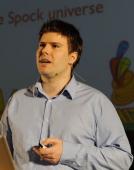 Creator of the Spock Framework
Creator of the Spock Framework
Peter Niederwieser is a computer language enthusiast from Linz, Austria. Having used Java since 1997, Peter nowadays prefers to work with more flexible languages - in particular Groovy, Scala, and Clojure. Peter is the creator of
In his day job, Peter is a Principal Software Engineer at


 Head of Grails Development for SpringSource
Head of Grails Development for SpringSource
As Head of Grails Development for SpringSource, Graeme Rocher is the project lead and co-founder of the Grails web application framework. He's a member of the JSR-241 Expert Group which standardizes the Groovy language. Graeme authored the Definitive Guide to Grails for Apress and is a frequent speaker at JavaOne, JavaPolis, NoFluffJustStuff, JAOO, the Sun TechDays and more. Graeme joined SpringSource in late 2008 upon the acquisition of G2One Inc. Before founding G2One, Graeme was the CTO of SkillsMatter, a skills transfer company specializing in open source technology and agile software development, where Graeme was in charge of the company's courseware development strategy and general technical direction.


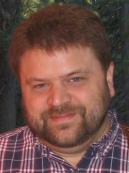 Forward Leaning Software Engineer
Forward Leaning Software Engineer
Brian Sletten is a liberal arts-educated software engineer with a focus on using and evangelizing forward-leaning technologies. He has a background as a system architect, a developer, a security consultant, a mentor, a team lead, an author and a trainer and operates in all of those roles as needed. His experience has spanned the online game, defense, finance, academic, hospitality, retail and commercial domains. He has worked with a wide variety of technologies such as network matrix switch controls, 3D simulation/visualization, Grid Computing, P2P and Semantic Web-based systems. He has a B.S. in Computer Science from the College of William and Mary. He is President of Bosatsu Consulting, Inc. and lives in Los Angeles, CA.
He focuses on web architecture, resource-oriented computing, social networking, the Semantic Web, scalable systems, security consulting and other technologies of the late 20th and early 21st Centuries.


 Technical Architect, AutoZone
Technical Architect, AutoZone
Matt Stine is a Technical Architect at AutoZone in Memphis, TN. He is an eleven year veteran of the enterprise software and web development industries, with experience spanning the healthcare, biomedical research, e-commerce, and now retail store domains. His current focus is the development and support of an enterprise Java platform supporting 4600+ AutoZone stores. Matt appears frequently on the No Fluff Just Stuff symposium series tour, as well as at other conferences such as JavaOne, SpringOne/2GX, The Rich Web Experience, and The Project Automation Experience. He has served as Agile Zone Leader for DZone, and his articles also appear in GroovyMag and NFJS the Magazine. Matt is also author of the Selenium 2.0 DZone Refcard. When he’s not on the road, Matt also enjoys his role as President of the Memphis/Mid-South Java User Group. His current areas of interest include lean/agile software development, modular software architecture, object-oriented design, functional programming, automated testing of modern web applications, and NoSQL datastores.


 Founder of Agile Developer, Inc.
Founder of Agile Developer, Inc.
Dr. Venkat Subramaniam, founder of Agile Developer, Inc., has trained and mentored thousands of software developers in the US, Canada, Europe, and Asia. Venkat helps his clients effectively apply and succeed with agile practices on their software projects, and speaks frequently at international conferences and user groups. Venkat is also an adjunct faculty and teaches CS courses remotely at the University of Houston. He is author of ".NET Gotchas," coauthor of 2007 Jolt Productivity Award winning "Practices of an Agile Developer," author of "Programming Groovy: Dynamic Productivity for the Java Developer" and "Programming Scala: Tackle Multi-Core Complexity on the Java Virtual Machine" (Pragmatic Bookshelf).


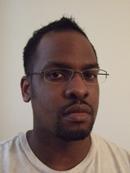 Co-creator of Griffon and Author of Learning HTML5 Game Programming
Co-creator of Griffon and Author of Learning HTML5 Game Programming
James Williams is a Senior Software Engineer for Taulia based in Silicon Valley and a frequent conference speaker. He is a co-creator of the Griffon project, a rich desktop framework for Java applications. He and his team WalkIN, created a product on a coach bus while riding to SXSW, and were crowned winners of StartupBus 2011. He is the author of the upcoming book "Learning HTML5 Game Programming..." for Addison-Wesley. He blogs at http://jameswilliams.be/blog and tweets as @ecspike.


- NFJS SITES:
- No Fluff Just Stuff
- Uber Conf
- NFJS One
- SpringOne 2GX
- Rich Web Experience
- Project Automation Experience
- SPRINGSOURCE SITES:
- Springsource.com
- Springsource.org




